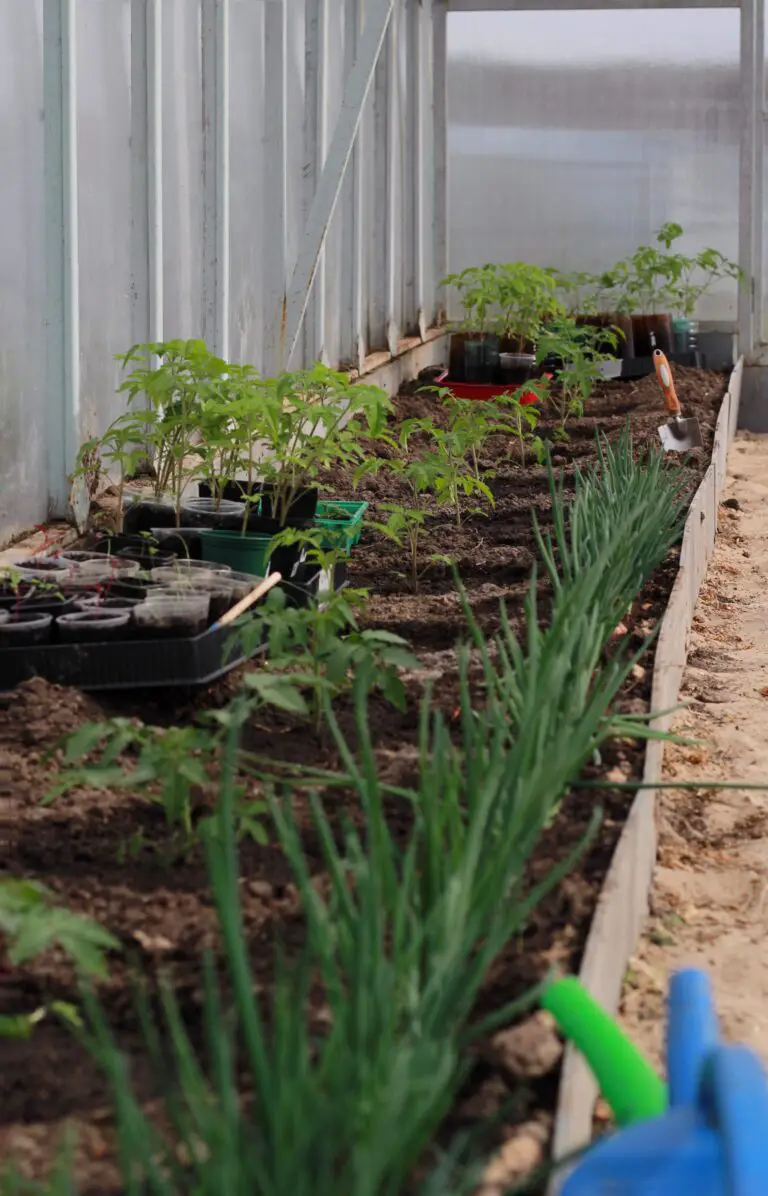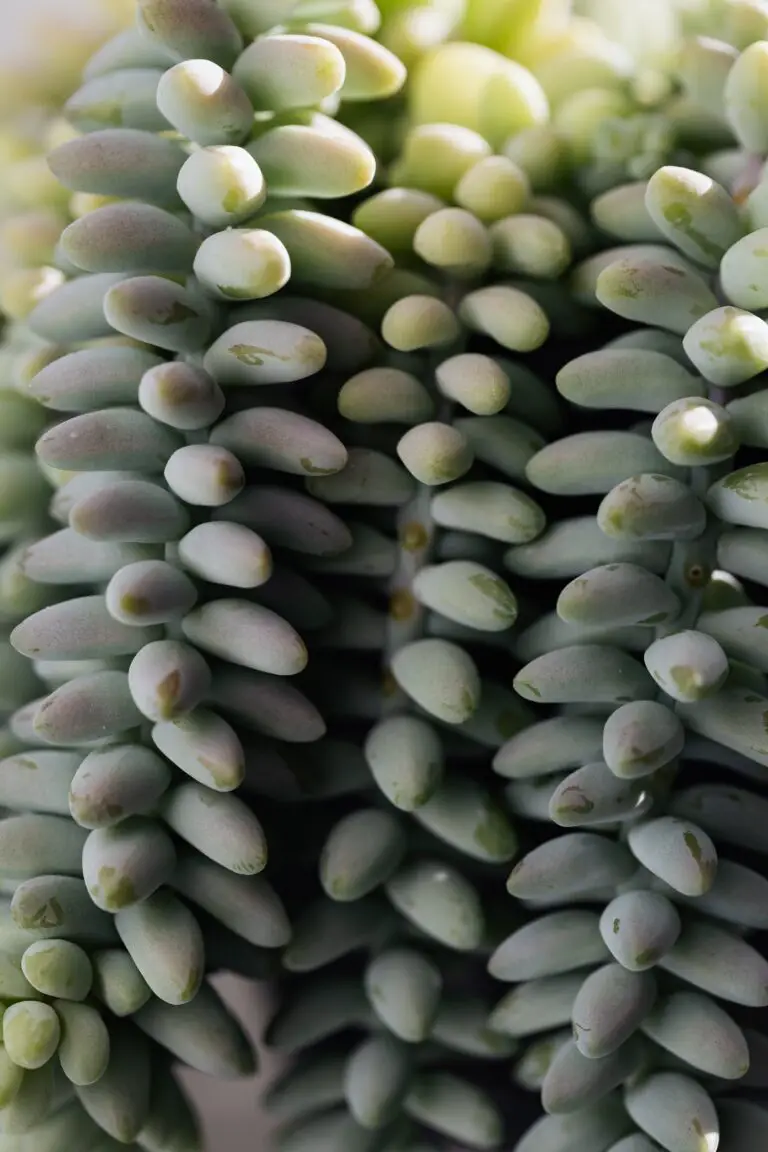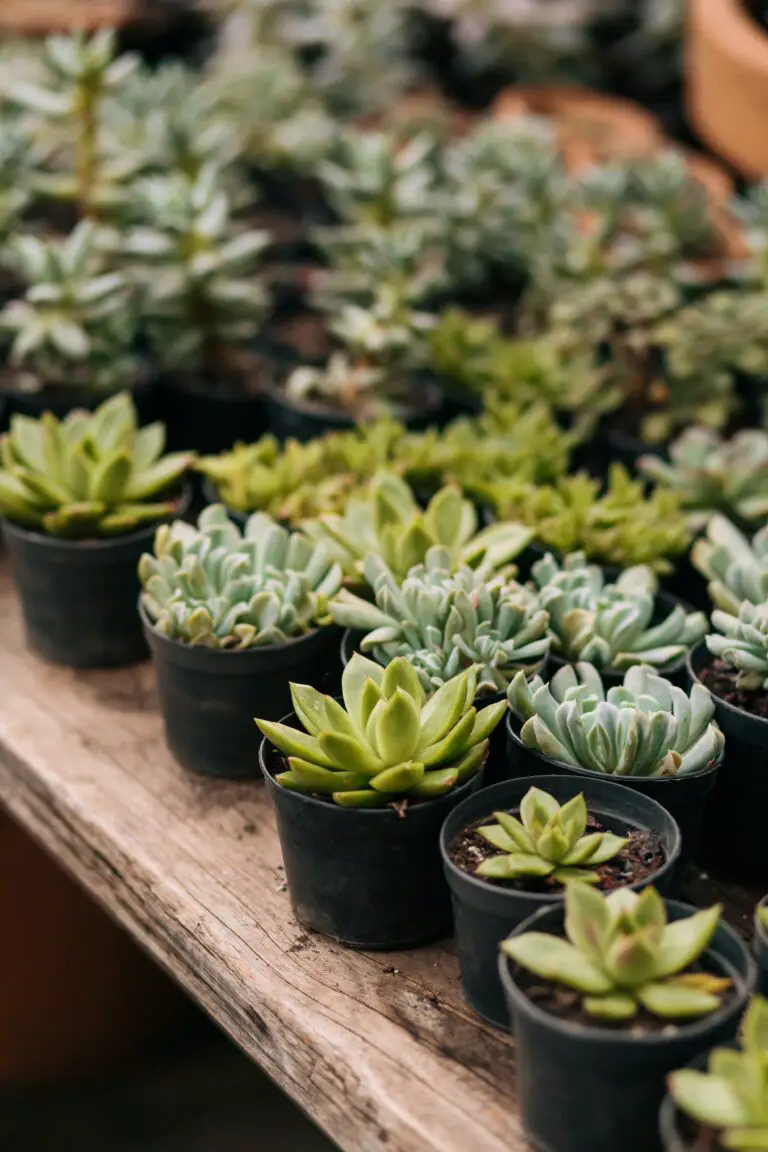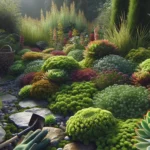Understanding Deer Resistance in Plants
So, you’ve decided to green up your garden with some lush sedum, but there’s a hitch — Bambi and friends are turning your backyard buffet into their favorite diner! Understanding what makes certain plants like sedum less appealing to deer can be a game-changer for gardeners tired of their hard work being gobbled up overnight. Let’s dig into the world of deer-resistant gardening, shall we?
Deer-resistant plants are akin to that one dish at the family BBQ that remains untouched — not because it’s bad, but perhaps it’s just too spicy or too out of the ordinary for most taste buds. Similarly, plants that deer tend to bypass often have strong scents, bitter tastes, or even prickly textures that make them less desirable than other, more tender options in your garden.
Imagine you’re a deer for a moment. You stroll into a garden and there it is — the sedum, standing tall with its fleshy leaves. Now, sedum may not have a bouncer to keep the deer at bay, but it comes equipped with a unique set of traits that often make deer say “no thanks” and move on to the neighbor’s hostas instead. This is a relief for anyone vested in eco-friendly garden solutions, as sedum varieties not only bring vibrancy to gardens but also contribute to biodiversity and require minimal fuss.
Stick around, as we’re not just leafing through basic tips here — we’re rooting for your success! Want to see these deer-dodging warriors in action? Check out this fascinating video on deer-resistant gardening that’ll give you a real glimpse of how to protect your green investments:
The struggle against deer can seem like a losing battle, but by choosing the right plants and learning more about what makes them resistant, you can turn your garden into a sanctuary that flourishes under your care — and not under the hooves of the local wildlife. So, don your garden gloves and let’s cultivate a space where the only thing you’ll catch deer doing is admiring from a distance!
Sedum 101: An Overview
Welcome to the world of Sedum, a diverse and colorful palette of plants resilient enough to make Bambi think twice! Often hailed as the hardy heroes of horticulture, these succulent perennials boast an armor of fleshy leaves, ready to take on the toughest garden adversaries – including those pesky deer. Rooting them into your garden narrative, sedums come in a symphony of shapes, sizes, and hues, composing a textural masterpiece that’s melodious to the eyes yet deer-discordant to the palate.
From the sun-worshipping ‘Autumn Joy’ with its broccoli-like blossoms to the ground-hugging ‘Dragon’s Blood’, spilling rubies of red across your garden tapestry, sedum varieties are as varied as the soil they spring from. Not only do these botanical bravados bring an array of visual vibrance, but their general indifference to neglect positions them as the unsung champions for both the green-thumbed and the greenhorn gardeners alike.
Speaking of resilient greenery, have you considered the nuances of plant care for similar hardy choices? Like sedums, these survivors embellish the earth unabashedly, no matter the attention they receive – a fascinating exploration for those keen to foster flora that flourishes with minimal fuss.
It’s no wonder that the sedums’ stingy water requirements and robust root systems have cast them in the leading role for deer-resistant gardening. These adaptations, which evolved over millennia, aren’t just a showcase of nature’s resilience; they are the very traits that turn our hoofed friends’ taste buds away, seeking sweeter pastures elsewhere.

Regarded by many plant enthusiasts as nature’s well-armored infantry, sedums serve not just as ornamental fixtures in our gardens but also as barriers against the silent grazers of the night. Their general characteristics – from their thick, succulent leaves to their bitter taste – are all evolutionary marvels, proving that sometimes the best defense is being simply, effectively inedible.
Analyzing the Deer Resistance of Sedum
When imagining a serene and intact garden, the last thing you want is a herd of deer turning it into their salad bar. Sedum plants, with their diverse and vibrant palette, have become a popular choice among gardeners, especially those hoping to deter these four-legged nibblers. But what is it about sedum that gives it its deer-resistant armor? Let’s chew over the reasons why these succulents might be less appealing to Bambi and friends.
First and foremost, consider sedum’s unique taste. These plants aren’t the first choice on the deer menu, mainly due to their bitter flavor. It’s the equivalent of choosing between a slice of cake and a plate of brussels sprouts. For us, the choice might vary depending on our health kick, but for deer, the sedum’s taste is a natural turn-off. Moreover, the texture of sedum—ranging from the jellybean-like leaves of ‘Sedum rubrotinctum’ to the rubbery foliage of ‘Sedum telephium’—is similarly off-putting. Deer prefer a softer, more succulent bite, rather than the chewy resilience of sedum leaves.
Toxicity is another factor. While sedum isn’t known to be highly toxic, it produces a saponin content which, in larger quantities, can make deer think twice before feasting. In fact, sedum’s chemical makeup is something like a pre-installed security system—just without the blinking lights and alarm bells. It’s a built-in protection that’s subtle yet effective.
Incorporating sedum into your garden is akin to adding a string of garlic bulbs in a vampire movie—it might not be an iron-clad guarantee against intrusion, but it significantly lowers the odds. Don’t believe it? Check out this video showcasing varieties that deer tend to avoid, and spot the sedum making its cameo as a reliable repellent.
One real-life example involves a gardener’s prized ‘Autumn Joy’ sedum, which remained untouched even as nearby hostas were decimated. This gives credence to the theory that sedum has a certain ‘je ne sais quoi’ that keeps deer at bay. If you’re planning to incorporate these deer-discouraging plants into your landscape, read more about gardening with deer-resistant stonecrop.
Interested in more garden planting tips? This article will provide you with a wealth of guidance on creating a flourishing and resistant garden space. Whether you’re a seasoned green thumb or just starting, understanding how to leverage plants like sedum can keep your garden verdant and virtually deer-free.
Popular Deer-Resistant Sedum Varieties
If you’re looking for a way to add texture and vibrant color to your garden without turning it into a deer buffet, sedum plants are your answer. These succulent beauties are known for their tenacity and, you guessed it, deer often thumb their noses at them. But not all sedums are created equal when it comes to resisting Bambi’s palate. Let’s explore some of the most popular varieties that stand a chance against those four-legged foragers.

‘Autumn Joy’: This classic sedum variety is like the Swiss Army knife of the plant world. It’s robust, adaptable, and most importantly, not a favorite snack for deer. With its sturdy stems and broccoli-like heads that blossom into a starburst of pink flowers, ‘Autumn Joy’ is a fall garden showstopper. Gardeners often share stories of deer sniffing around only to bypass this trusted variety in search of tastier morsels.
‘Dragon’s Blood’: This sedum brings the drama with its fiery red leaves and creeping habit. It’s perfect for those hard-to-plant areas like slopes and rock walls, where its tenacity is a boon—not to mention its resistance to hoofed invaders. Envision a tapestry of red creeping sedum, untouched by deer, knitting together a breathtaking foreground in your garden tableau.
‘Brilliant’: Just like its name suggests, the ‘Brilliant’ sedum shines bright with vibrant pink blooms that can dazzle any onlooker. However, deer seem to give this variety a courteous nod rather than a nibble. It’s a garden favorite, especially among those who have battled with deer and are looking for a reliable plant ally.
‘Blue Spruce’: Who says you can’t have conifer-like foliage on a low-growing plant? ‘Blue Spruce’ sedum offers just that. With its blue-green, spruce-like leaves, this variety can withstand drought, poor soil, and, yes, the disinterest of deer. It’s like having a miniature forest floor that deer are more likely to admire from a distance than to disrupt with their grazing.
‘Matrona’: Emanating sophistication, the ‘Matrona’ sedum carries itself with a certain poise that seems to exude a deer-repelling aura. Its thick stems and deep purple leaves set up a formidable front. Plus, when its pinkish blooms make an appearance, they do so with elegance that appears to be admired from afar by deer and gardeners alike.
These are just a few examples of how sedum varieties can serve as both ornamental highlights and deer management solutions in your garden. With these plants, deer might just stick to the script of quiet woodland creatures that grace your yard without feasting on your flora. Imagine that—a beautiful, flourishing garden that stays intact even as the deer come and go.
Incorporating Sedum into Your Garden Design
If you’ve had a chance to chat with any gardener about their battle against deer munching through their beloved plants, you’d likely hear a common refrain: “If only everything were as deer-resistant as sedum!” That’s right, folks, sedum – also known as stonecrop – is one heck of a hardy trooper in the garden wars against these antlered nibblers. But to really tap into the deer-dodging prowess of these succulent beauties, strategic placement is key. Let’s dig into making sedum the guardians of your garden’s greenery!
Picture this: Your garden is a canvas, and sedum plants are the vibrant strokes of green that not only add visual energy but also serve a protective role. Imagine lining the outer edges of your property with a lush border of sedum. Why? Well, this isn’t just about creating a pretty panorama. That dense, foliage-rich frontline acts as a green shield, making Bambi think twice before they take a step closer. It’s like setting up a bouncer at the club – only this bouncer is green, leafy, and looks fantastic year-round!
Now, gather round for a tale from Mrs. Thompson’s garden down the lane. Once a favorite salad bar for the local deer population, Mrs. Thompson decided to mix things up by adding clusters of sedum among her roses and tulips. The result? A drop in unexpected deer dinner parties! It seems the deer found the texture and taste of sedum less appealing than their usual flowery feast. By weaving these resilient plants throughout her garden, she created a living maze that left the deer baffled and her flowers blooming in peace.
But don’t just take my word for it – let’s see sedum in action! Here’s a video that showcases the virtues of these deer-resistant dynamos. Ready to see how sedum can save your garden from those hooved marauders?
Let’s not forget that sedum isn’t just a pretty face with a tough attitude towards deer. These wily plants come in a variety of shapes, sizes, and colors, offering endless possibilities for creative garden design. Whether you’re crafting a cascading rockery or looking for the perfect perennial to nestle next to your garden path, sedum fits the bill. And the best part? They are low maintenance, drought-resistant, and thrive in a range of conditions – talk about a triple threat!
Incorporating sedum into your garden isn’t just about keeping the deer at bay – it’s about embracing plants that bring vibrancy, texture, and resilience to your garden tableau. So why not let these leafy warriors stand guard and bring some peace of mind to your green sanctuary? Trust me, your garden (and your nerves) will thank you!
Protecting Your Sedum: Additional Measures
Yes, Sedum plants have developed their own defenses against deer, which often sidestep these hardy succulents in search for more palatable treats. But why stop at natural deer resistance when you can fortify your garden’s defenses even further? Just as a wise general never relies on a single strategy, so too should the savvy gardener employ an array of tactics to ensure their Sedum stand strong against these garden grazers.
Imagine a fortress; your Sedum is the treasure within. To protect it, consider diversifying your plantings. Companion planting with other deer-resistant varieties creates an uninviting buffet for our hoofed intruders. Marigolds and lavender, for example, not only add vibrant color and aroma to your garden but also serve as aromatic sentinels that help keep deer at bay.
It’s also essential to remember that deer are creatures of habit. Interceptor tricks like altering the landscape can break their routine and deter them from turning your garden into a stopping point on their daily forage route. Try adding terracing or uneven ground, which can act as a subtle yet effective deterrent to those four-legged trespassers.
Physical barriers can be both practical and aesthetically pleasing. No need for the eyesore of high fences when you can use a combination of low fencing supported by shrubs with dense foliage. The added benefit? This green wall adds privacy and beauty to your space. Just take a peek at  from a fellow Sedum lover’s garden, showing not only the plants’ resilience but also how seamlessly integrated protective measures can be.
from a fellow Sedum lover’s garden, showing not only the plants’ resilience but also how seamlessly integrated protective measures can be.
For those of you who favor a more modern approach, motion-activated sprinklers are like setting up a surprise party for deer—except they’re not invited. The sudden burst of water is enough to startle and confuse deer, making them think twice before munching on your Sedums.
Let’s not forget the use of safe, non-toxic repellents. Commercial repellents that emit smells and tastes deer find off-putting can be an invaluable tool in your arsenal. Just remember to apply them regularly, especially after a rain shower, and to rotate between different types to prevent those pesky deer from becoming too accustomed to any one deterrent.
From strategic planning to smart garden design, protecting your Sedum from deer requires a vigilant yet creative touch. With these measures in place, rest assured that your succulent treasures will flourish, unfazed by the whispers of wandering wildlife.
Caring for Your Sedum to Enhance Deer Resistance
When it comes to keeping your garden safe from those pesky deer, sedum plants are often hailed as a trusty green knight. But just like any knight needs their armor polished, your sedum requires care to keep it in tip-top shape. So, let’s mold your green thumb into a deer-resisting superpower!
First, think about water as the elixir of life – sedum struts its succulent stuff best when not drowning in moisture. Overwatering is a no-no, potentially leading to soft, tender, and oh-so-delectable leaves for our hoofed friends. Instead, moderate your watering schedule to ensure your sedum’s leaves are robust and less appealing to deer.

Now, let’s talk soil. Sedum thrives in well-draining soil that lets their roots breathe easy. If your soil holds water like a sponge, consider amending it with coarse sand or fine gravel. This helps mimic their natural rocky habitats and makes the plants less lush, deterring both deer and common soil pathogens that could weaken the plants’ defenses.
Good sunbathing isn’t just for beachgoers – sedum plants adore a sunny spot, and plenty of sunlight helps them produce those thick, waxy leaves that deer find less palatable. Full sun exposure toughens up the foliage, so plant your sedum where the rays can reach them, as though spotlighting an impromptu garden pageant.
A nutrient overload can cause your sedum to put out lush, tender growth, basically setting a leafy buffet for Bambi. Instead, fertilize sparingly or use slow-release organic options. Remember, you’re not running a deer diner; you’re fortifying a floral fortress!
Finally, let’s pull out some storytelling charm! Picture Jenny, a fellow gardener. She planted a swathe of sedum along her garden edge, near a known deer trail. She followed this regime dutifully, and her sedum stood like an unyielding hedge against the deer onslaught. Visitors are more likely to spot a unicorn than a deer nibbling at Jenny’s sedum! Be like Jenny, and turn your sedum into the heroes of your horticultural haven.
So gear up, gardener! With the right care, your sedum can be more than just deer-resistant – it can be deer-defying. Equip your plants with the strength they need, and watch them banish those deer to the far reaches of your garden lore.
Alternative Deer-Resistant Plants to Pair with Sedum
Looking to beef up your garden’s defenses but still keep it looking like a page out of a fairytale? Let’s take a stroll through some plant companions that stand alongside sedum like knights in shining armor against the deer population. Imagine a garden so enchanting, yet the deer would rather admire it from afar than dare take a nibble.
First up, we have the gallant Lavender, with its alluring fragrance and noble purple blooms. It’s a multitasker that not only repels deer but also invites a brigade of beneficial pollinators. Picture a lavender hedge offering its perfumed protection to your sedum—it’s like pairing a fine wine with an exquisite meal.
Next, let’s talk about the robust Boxwood. These evergreen shrubs are like the castle walls around your garden. They’ve got a tough exterior that’s resistant to deer, and their dense foliage provides a year-round, green backdrop that makes the sedum’s vibrant colors pop!
If you’re looking for a splash of daredevil color, turn to the trusty Salvia. With spiky flowers standing at attention in an array of colors, salvia doesn’t just brave the deer; it also gives your garden a vertical dimension of drama and contrast.
Let’s not overlook the dainty yet dauntless Catmint. It shares a family tree with lavender but brings its own unique twist to the table. Those soft, silvery leaves and whimsical purple flowers serve a one-two punch: a visual feast for you and a ‘keep out’ sign for the deer.
And for those shady spots where the sun is shy, the steadfast Ferns offer a lush, prehistoric look that makes your garden feel like a sanctuary lost in time. They’re known for their graceful arching fronds that remain untouched by the nibbling neighbors.
Here’s a little pro tip: interspersing these plants among your sedum can create a tapestry that’s not just pretty but has the backbone to stand up to deer. But wait, there’s more! Let’s dig into a video that showcases how you can weave these plants into your garden’s narrative for a landscape that’s both beautiful and battle-ready against our antlered acquaintances.
Whether you’re a green thumb champion or just starting out, remember that your garden is a canvas, and you’re the artist. With these deer-resistant warriors by your side, your sedum will thrive, and your garden will transform into a picturesque, peaceful haven that not only you can enjoy but also rest easy knowing it’s got a natural defense system built-in. So go ahead, get creative and start plotting your horticultural stronghold.
Frequently Asked Questions
When it comes to an enchanting and hardy addition to your garden that might just sidestep the pesky interest of deer, sedum plants often top the list. But just how deer-resistant are these plucky perennials? Let’s dig into the details!
Are Sedum Really Deer-Resistant?
Imagine a lush garden, your very own slice of Eden, only to find it trampled and nibbled by the local deer population. Enter sedum, the low-maintenance, drought-tolerant saviors. While no plant is completely deer-proof, sedum plants are less palatable to these four-legged foragers. With a variety of textures, from the rubbery feel of ‘Autumn Joy’ to the waxy appearance of the ‘Dragon’s Blood’, sedum is not typically at the top of the menu for deer, making them a reliable option for gardeners seeking a semblance of deer resistance in their plant choices.
Expert Care Tips to Enhance Deer Resistance
Get the best out of your sedum and further decrease the odds of a deer dinner party by keeping your plants healthy. Sedum thrives in well-drained soil with plenty of sunshine, morphing into strong, robust plants that are even less appealing to deer. Regular, but moderate, watering will do, as their succulent leaves store water adeptly. And guess what? The healthier they are, the more their natural deer-resistant qualities shine through.
Smart Planting: The Deer-Deterring Garden Layout
Now let’s strategize. Plant your sedum alongside other deer-resistant warriors like lavender, peonies, and salvia. Creating a barrier with these unappetizing plants can help safeguard the rest of your garden. It’s like setting up a security system, only prettier and much more fragrant!
Deer Deterrent 101: Beyond Plant Choice
Mixing physical barriers with sensory deterrents can add another layer of protection. Think motion-activated sprinklers, or hanging soap bars from trees. Both have reputations for sending Bambi bolting in the other direction.
And now, let’s take a quick visual break to appreciate the resilience and beauty of sedum plants:



